P2X7 Receptor Suppression Preserves Blood-Brain Barrier through Inhibiting RhoA Activation after Experimental Intracerebral Hemorrhage in Rats
- PMID: 26980524
- PMCID: PMC4793194
- DOI: 10.1038/srep23286
P2X7 Receptor Suppression Preserves Blood-Brain Barrier through Inhibiting RhoA Activation after Experimental Intracerebral Hemorrhage in Rats
Abstract
Blockading P2X7 receptor(P2X7R) provides neuroprotection toward various neurological disorders, including stroke, traumatic brain injury, and subarachnoid hemorrhage. However, whether and how P2X7 receptor suppression protects blood-brain barrier(BBB) after intracerebral hemorrhage(ICH) remains unexplored. In present study, intrastriatal autologous-blood injection was used to mimic ICH in rats. Selective P2X7R inhibitor A438079, P2X7R agonist BzATP, and P2X7R siRNA were administrated to evaluate the effects of P2X7R suppression. Selective RhoA inhibitor C3 transferase was administered to clarify the involvement of RhoA. Post-assessments, including neurological deficits, Fluoro-Jade C staining, brain edema, Evans blue extravasation and fluorescence, western blot, RhoA activity assay and immunohistochemistry were performed. Then the key results were verified in collagenase induced ICH model. We found that endogenous P2X7R increased at 3 hrs after ICH with peak at 24 hrs, then returned to normal at 72 hrs after ICH. Enhanced immunoreactivity was observed on the neurovascular structure around hematoma at 24 hrs after ICH, along with perivascular astrocytes and endothelial cells. Both A438079 and P2X7R siRNA alleviated neurological deficits, brain edema, and BBB disruption after ICH, in association with RhoA activation and down-regulated endothelial junction proteins. However, BzATP abolished those effects. In addition, C3 transferase reduced brain injury and increased endothelial junction proteins' expression after ICH. These data indicated P2X7R suppression could preserve BBB integrity after ICH through inhibiting RhoA activation.
Figures
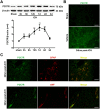

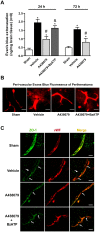


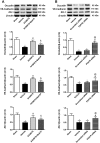
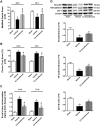
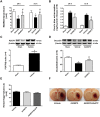
References
Publication types
MeSH terms
Substances
LinkOut - more resources
Full Text Sources
Other Literature Sources
Miscellaneous

